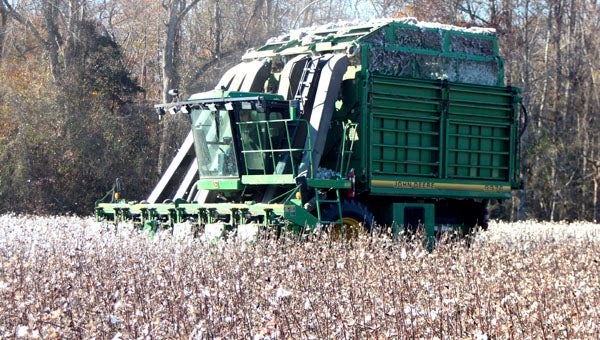Soggy but not spoiled
Published 9:13 pm Wednesday, October 7, 2015

The Barlow family harvests cotton in one of their Chuckatuck-area fields last year. This year’s yields might be slightly reduced because of heavy rains, others said.
Even with the sun shining now — finally — the water’s certainly not out of the fields yet. But all is not lost with this year’s row crops of cotton, peanuts and soybeans, particularly where cotton is concerned.
“We’re going to have some yield reductions,” said Chris Drake, territory agronomist for Phytogen Cottonseed. “The cotton lint we all drive by and see on the ground looks bad, but it paints a much worse picture than what the reality is, possibly a 2 to 3 percent yield reduction,” he said.
Westley Drake of Sandy Ridge Farms in Newsoms said he can’t just walk out into the fields now and make an estimate. He won’t know how much loss there’s been until the conclusion of the harvest.
Johnny Parker, the cotton agronomist for Commonwealth Cotton Gin, noted two factors that will contribute to yield loss: the cotton that’s fallen on the ground and hard lock. The latter, he explained, happens when cotton matures, but the boll was trying to open and couldn’t due to the inclement weather. This keeps the cotton from fluffing out well enough for the pickers.
“Falling on the ground and hard lock — those combinations are going to create a 10 to 20 percent yield loss overall,” Parker said.
So the obvious ingredients needed now for harvesting are dry ground and the cotton itself must dry and fluff out, which takes time.
“We’re hopeful we didn’t lose too much of that,” Chris Drake said. “The earliest to begin any harvesting would be this Friday and that would be for those crops in a sandier type of soil. We really need a long stretch of hot weather.”
Seed sprouting is the biggest issue now, he added. That is, the seeds within cotton can start to germinate and grow. This also can delay harvesting.
He continued, “If the cotton is harvested while the sprouts are still green, it can lead to potential fire hazard in the module, as well as quality issues with the grade of the cotton.”
But, Parker said, as soon as the sun comes out, those growths will dry up and perish.
The harvest of seeds is included in the picking of cotton, and he estimated seed loss could also be at 10 to 20 percent, but is less sure now about that figure, not having walked out to a lot of fields.
Chris Drake noted that most of the corn has been picked, and this year’s harvest has been a good crop.
As for peanuts, he said, “Those peanuts laying on the ground could suffer some yield reduction due to weak rotten stems that cause peanuts to shed off, but the larger issue is the ones that are still in the ground yet to be dug.”
But Westley Drake feels the peanuts in his fields will still be OK. Waiting a couple of extra weeks for drying time would be the biggest inconvenience at the farm.
Asked about the soybean crop, he said the early planting is fair to average. Those planted behind winter wheat were “hurt the worst because of the dry weather prior to the rain.”
Overall, Westley Drake is not worried.
“I have still have an optimistic approach,” he said. “I’m keeping my head high and I’m excited to get back into the field.”





